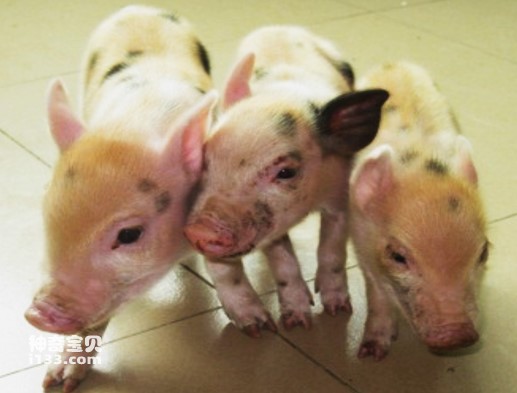Dr. Lai Liangxue, a researcher at the Guangzhou Institute of Biomedicine and Health, Chinese Academy of Sciences and a professor at the School of Animal Hospital of Jilin University, collaborated with Professor Wang Zhong from the University of Michigan to obtain the world's first ROSA26 targeted gene knock-in pig model. Using this model pig, recombinase-mediated gene exchange was successfully achieved, thereby solving the problems of low efficiency and uncertain phenotype that have been plaguing the field of transgenic pig research. The acquisition of this result will greatly promote the application of transgenic pigs in agriculture and medicine. applications. The research results were published online in Cell Research on February 7.

ROSA26 transgenic piglets
Transgenic pigs have very important application value in the cultivation of new agricultural varieties and biomedical research. Due to the lack of porcine embryonic stem cells for a long time, the preparation of transgenic pigs mainly relied on somatic cell gene modification and somatic cell nuclear transfer technology. At present, genetic modification of somatic cells mainly involves randomly inserting exogenous genes into the pig genome. Therefore, the integration site and copy number of the exogenous genes in the pig genome are uncontrollable, resulting in unstable expression of the exogenous genes in pigs, and transgenic pig individuals. The phenotypes are not uniform, thus limiting the breeding and application of transgenic pigs.
This research team first found a special gene locus in the pig genome: ROSA26. The genes behind this locus are widely expressed in all tissues and cells. In the past 20 years, a series of Rosa26 mouse models have been obtained by modifying the mouse Rosa26 gene locus, which has played a huge role in developmental biology and stem cell research. Currently, this locus is only found in human embryos. Stem cells have been identified and modified in rats, but have not yet been discovered and applied in large animals.
Researchers used TALEN-mediated gene knock-in technology to successfully construct the world's first large animal model of ROSA26 site-specific knock-in of the Cre recombinase reporter gene. This animal model will be able to track the differentiation and regeneration of various types of stem cells in pigs, providing valuable large animal experimental basis for revealing the disease mechanisms related to human stem cells and implementing stem cell treatments.
On this basis, researcher Li Xiaoping and his collaborators cleverly designed to introduce a pair of heterologous loxp sites at the ROSA26 site, and successfully replaced the EGFP gene with the red fluorescent protein tdTomato gene through recombinase-mediated gene exchange. The world's first large animal model of recombinase-mediated gene exchange was obtained. Using this model, researchers can insert any gene into the ROSA26 site through recombinase-mediated gene exchange to achieve undifferentiated expression of the target gene in all tissues of large animals. At the same time, since the gene exchange mediated by recombinase can be obtained without drug screening, the obtained transgenic pigs will not carry exogenous drug resistance genes, and the biosafety and food safety risks of transgenic pig agricultural products can be eliminated.
This research was funded by the National Ministry of Science and Technology’s “Major Basic Research Program” and the U.S. National Institutes of Health (NIH).
animal tags:
We created this article in conjunction with AI technology, then made sure it was fact-checked and edited by a Animals Top editor.